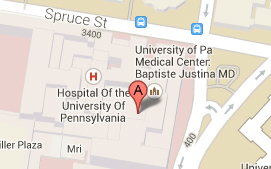Cardiac Imaging Group
About
Our major interest is to use imaging tools such as echocardiography, cardiac MRI, and positron emission tomography (PET) to understand cardiac physiology/pathophysiology and to characterize the myocardium in different disease states.
Our main research efforts have evolved in several different areas:
- 4D flow
Time resolved 3D flow imaging allows the characterization of complex flow patterns in the ventricles and the great vessels. We have been applying this method to study the right ventricle and pulmonary artery flow in patients with pulmonary hypertension. As the right ventricle dilates and the pulmonary vascular resistance rises, the right ventricle becomes less efficient in its work and undergoes adverse remodeling. This process can be assessed using 4D flow. To visualize the flow pattern of a normal subject vs. a patient, please click here. Here is a recent publication http://journals.plos.org/plosone/article?id=10.1371%2Fjournal.pone.0138365 - Real–time imaging of arrhythmias
Irregularly irregular arrhythmia is difficult to image with any imaging techniques, including conventional cine CMR because arrhythmia rejection and registration–based reconstruction result in cardiac motion artifacts or unachievable breath–hold durations. Under–sampled radial trajectories, combined with a suitable non–Cartesian reconstruction algorithm, have the potential to overcome these problems by sampling a small number of radial projections without loss of temporal fidelity associated with temporal regularization. We are developing high spatial and high temporal resolution real–time imaging and reconstruction techniques to be able to assess cardiac function in arrhythmia patients in a quantitative and accurate fashion. Here are recent publications: 1.http://jcmr-online.biomedcentral.com/articles/10.1186/s12968-015-0146-9 2. http://circep.ahajournals.org/content/9/4/e003520.full.html?ijkey=qiGcqPgtQHm0UBV&keytype=ref - Non–contrast method of tissue characterization
Using gadolinium containing MRI contrast, fibrosis and myocardial scar have been imaged with high spatial resolution. Gadolinium provides excellent contrast, but lacks specificity. Novel methods to create tissue contrast in conjunction with gadolinium contrast may provide additional means of tissue characterization. Along these lines, we are exploring T1rho (spin–lock) mechanism in both ischemic and non–ischemic cardiomyopathies. Here is a recent publication: http://journals.plos.org/plosone/article?id=10.1371%2Fjournal.pone.0151144 - Metabolic Imaging
Metabolic alterations in cardiac disease states are increasingly recognized and important to study and target therapies to. Currently, in conjunction with our clinical trial "Targeting metabolism to reverse RV dysfunction in patients with pulmonary hypertension," we are using C11–acetate and 18–FDG PET to probe the RV metabolism in patients with pulmonary hypertension. There are cardiac MRI methods for metabolism as well such as chemical exchange saturation transfer (CEST) and MRI spectroscopy. Increasing signal to noise at high fields (7T) will enable the application of CEST imaging to patient populations. We actively collaborate with Dr. Ravi Reddy, Director of Center For Magnetic Resonance And Optical Imaging at University of Pennsylvania. - Diastolic function
Diastole — the relaxation and filling portion of the cardiac cycle is an energy consuming time for the myocardium. Early abnormalities in myocardial function often surface in this phase of the cardiac cycle before overt disease manifest. We use echocardiography Doppler methods to examine diastolic function in disease states such as atrial fibrillation and orthotopic heart transplants. We also use speckle tracking echocardiography and cardiac MRI tagging/DENSE methods to study diastolic function in a variety of disease states.

